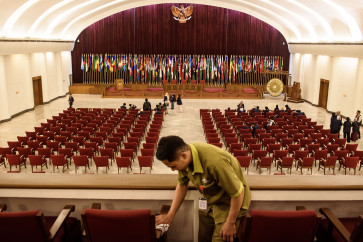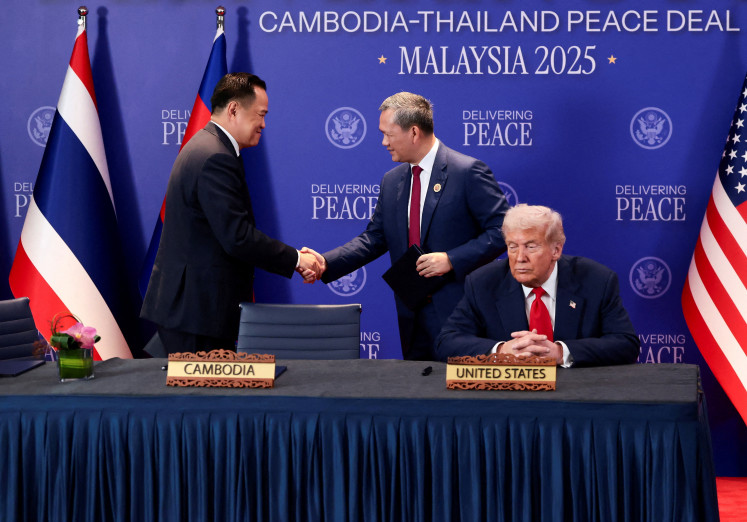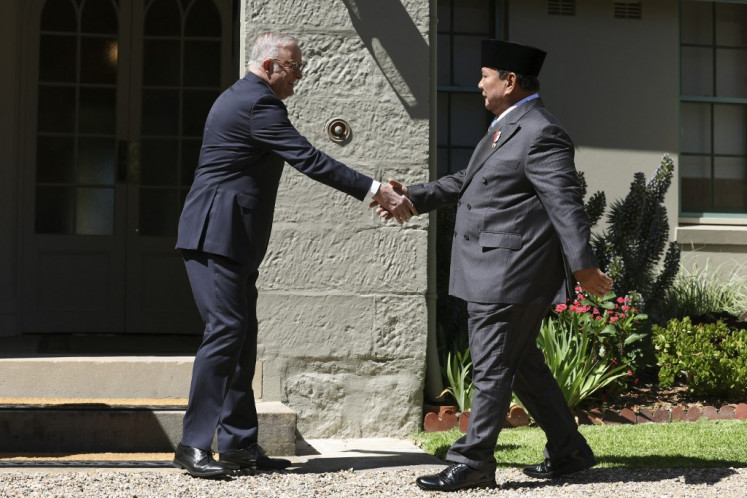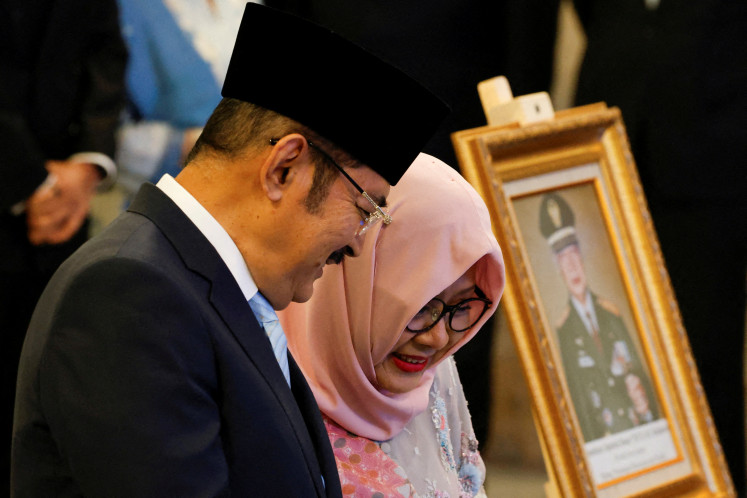Popular Reads
Top Results
Can't find what you're looking for?
View all search resultsPopular Reads
Top Results
Can't find what you're looking for?
View all search resultsNATO to replace AWACS surveillance jets with modified Boeing 737
Change text size
Gift Premium Articles
to Anyone
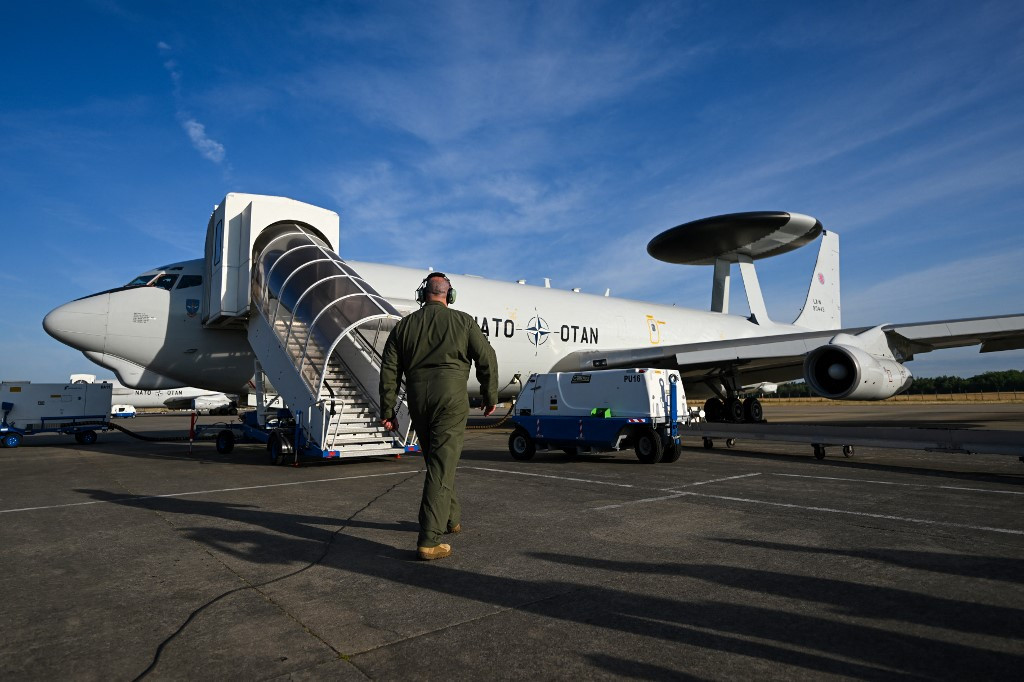 A crew member checks a NATO Airborne Warning and Control System (AWACS) aircraft, which participates in the German-led multinational exercise Air Defender 23, at the military base of Geilenkirchen, western Germany, on June 20, 2023. NATO plans to replace the ageing feelt of AWACS aircraft with Boeing E-7A Wedgetail (AFP/Ina Fassbender)
A crew member checks a NATO Airborne Warning and Control System (AWACS) aircraft, which participates in the German-led multinational exercise Air Defender 23, at the military base of Geilenkirchen, western Germany, on June 20, 2023. NATO plans to replace the ageing feelt of AWACS aircraft with Boeing E-7A Wedgetail (AFP/Ina Fassbender)
N
ATO will replace its ageing fleet of AWACS surveillance planes, in service since the Cold War in the 1980s, with a militarized version of the Boeing 737 commercial jet, the alliance said on Wednesday, in a deal likely worth billions of euros.
Acting like a flying radar tower, the AWACS (Airborne Warning and Control System) jets with the distinctive, nine-meter-wide radomes on their backs have been NATO's eyes in the sky since 1982.
With their rotating radar, the current modified Boeing 707 jets, also known as E-3 Sentry, can detect aircraft at a distance of more than 400 kilometers.
They are capable of monitoring an area of some 300,000 square km, a territory the size of Poland, according to NATO, and can also detect ground targets such as ships.
To replace the old AWACS jets, NATO aims to purchase six Boeing E-7A Wedgetail planes, with the contract to be signed in 2024 and the first jet ready for operational duty by 2031.
"Surveillance and control aircraft are crucial for NATO's collective defense and I welcome allies' commitment to investing in high-end capabilities," NATO Secretary General Jens Stoltenberg said.
"This investment in state-of-the-art technology shows the strength of transatlantic defense cooperation as we continue to adapt to a more unstable world."
The alliance did not specify why it chose to replace its fleet of 14 AWACS planes with only six Wedgetail jets, but it said the new aircraft would have better capabilities and be more expensive than their predecessors.
The United States, Britain and Turkey also either fly the Wedgetail or plan to operate it.
Based at Geilenkirchen airbase in Germany, the AWACS fleet has been widely used for NATO surveillance missions along the alliance's eastern flank in the wake of Russia's attack on Ukraine.
In the past, the aircraft supported NATO missions in the Balkans, Afghanistan and Iraq, but also events such as the 2006 World Cup in Germany and summit meetings.
In a conflict, the AWACS planes can not only provide a radar picture for allied fighter jets, ships and control centers, but also direct NATO combat jets to their targets.
The aircraft, one of the few assets NATO actually owns, are staffed with multinational crews from 19 of the 31 allied nations.


